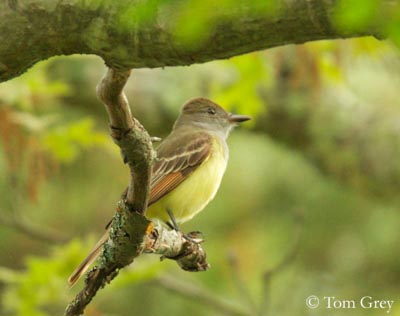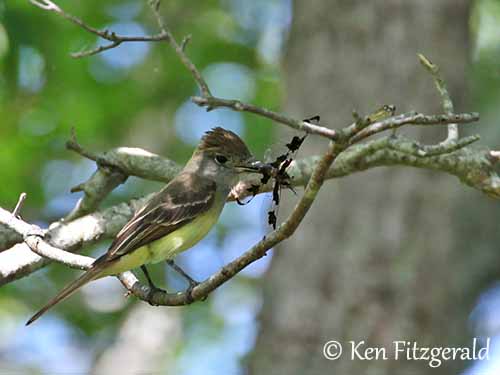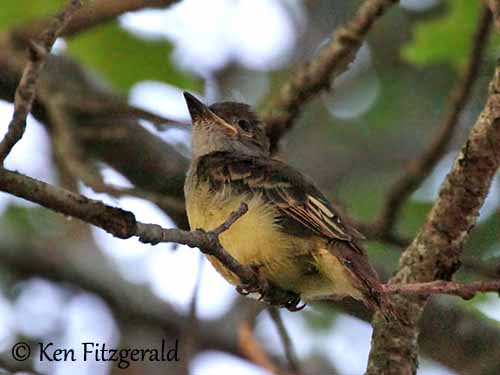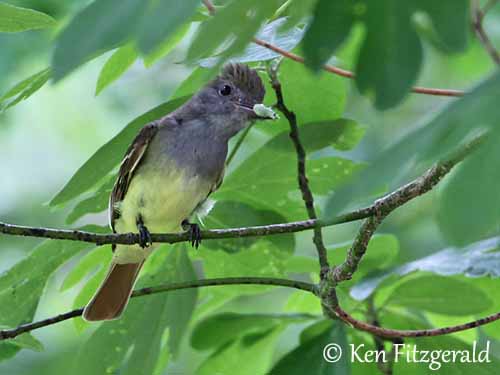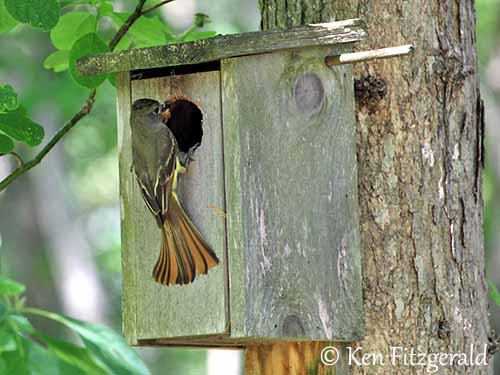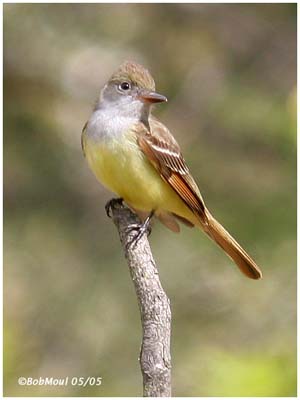
Great-crested Flycatcher
Myiarchus crinitus
Passeriforme Order – Tyrannidae Family
BIOMETRICS:
Length: 17-21 cm
Wingspan: 34 cm
Weight: 27-40 g
LONGEVITY: Up to 13 years
DESCRIPTION:
Great-crested Flycatcher has dark brownish-olive upperparts. Cinnamon wings show pale wing bars and edges. Tail is brown with cinnamon edges.
Underparts, belly, vent and undertail coverts are yellow. Throat and breast are grey. Chin is pale grey.
It may fluff its crest when excited or disturbed. Bill is black with pale base to lower mandible. Eyes are black. Legs and feet are pale grey.
Both sexes are similar, with male slightly larger than female.
Juvenile resembles adults.
Fr: Tyran huppé
All : Gelbbauch-Schopftyrann
Esp : Copetón Viajero
Ital : Pigliamosche crestato maggiore
Nd : Geelborsttiran
Sd : Större topptyrann
Photographers :
With the kind participation of Ken Fitzgerald – Plymouth, MA
Tom Grey :
His website :
Tom Grey's Bird Pictures
René Lortie
His website :
http://rlortie.ca/
Bob Moul
His website :
Nature Photography
Text by Nicole Bouglouan
Sources:
FIELD GUIDE TO THE BIRDS OF NORTH AMERICA - National Geographic Society - ISBN: 0792274512
A GUIDE TO THE BIRDS OF MEXICO AND NORTHERN CENTRAL AMERICA by Steve N. G. Howell, Sophie Webb - Oxford University Press - ISBN: 0198540124
All About Birds (Cornell Lab of Ornithology)
What Bird-The ultimate Bird Guide (Mitchell Waite)
Wikipedia (Wikipedia, The Free Encyclopedia)
Birds of Nova Scotia (Robie Tufts)

VOICE: SOUNDS BY XENO-CANTO
Great-crested Flycatcher’s call is a rapid series of loud and musical whistled “wheep”. We can also hear a grating call, and a rolling “prrrreeeet”.
HABITAT:
Great-crested Flycatcher is relatively common in a wide variety of open woods, wooded swamps, urban parks and areas with large shade trees.
RANGE:
Great-crested Flycatcher breeds in Eastern North America.
It winters from Mexico to Northern South America, in humid forests, and also in Southern Florida and Cuba.
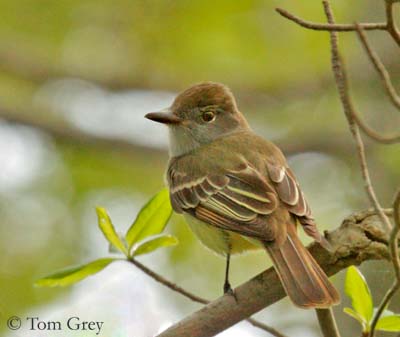
BEHAVIOUR:
Great-crested Flycatcher lives in forests. We can often see it perched on exposed branches or wires. It sallies forth to snatch flying insects. It also gleans insects from foliage, high in canopy. When on the ground, it doesn’t hop or walk, but it prefers to move from place to place flying.
Great-crested Flycatcher is an aggressive bird, defending strongly its territory against intruders.
They are cavity nesters, but they don’t excavate the hole themselves.
Great-crested Flycatcher is migratory, and it travels by day, at great height.
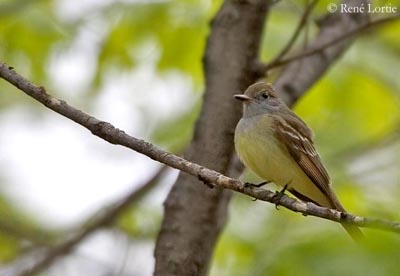
FLIGHT:
Great-crested Flycatcher has swift buoyant and powerful direct flight. It hovers over foliage or ground to feed.
REPRODUCTION:
Great-crested Flycatcher is a cavity nester, in deciduous or mixed woodlands, near clearing and forest edges.
Bulky nest is build by both adults in a natural cavity, or in nest box. It is made with dead leaves, twigs, grass, feathers, and very often they add pieces of snake skin, cellophane or onion skin.
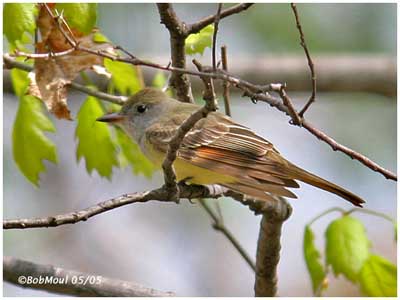
Female lays 4 to 5 creamy white to pinkish eggs, blotched and streaked with brown. Incubation lasts about 13 to 15 days, by both adults. They feed and protect altricial chicks, until they fledge, at about two weeks after hatching.
After fledging, adults and young remain as family group, in the nesting area for up to three weeks.
This species produces only one brood per season.
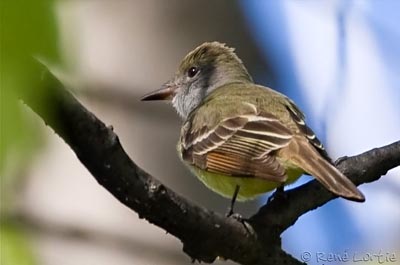
DIET:
Great-crested Flycatcher feeds mainly on varied insects, such as beetles, wasps and bees, grasshoppers, moths, caterpillars and others. They also eat numerous berries and some lizards.
